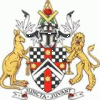
EDUCATION & DEVELOPMENT – UNITED SOVEREIGN GRAND CHAPTER – BACK TO THE QUARRIES:-
A TROWEL OF CEMENT – REMEMBERING OUR MASONIC COMMENCEMENT
This being the month of November, which also causes us to pause and REMEMBER the 11th Day of the 11th Month, it should be also worthwhile pausing to reflect upon those very early days when this country of Australia commenced colonisation. Of course it was the military to whom our thoughts fly they being the conveyors of not only the convicts but also the original Masonic Travelling Warrants which permitted Freemasonry to take a place, for better or worse, in those extremely tough and at times near starving days. The settlement began as a consequence of the Americans rejecting the unloading of any more convicts there and the prison hulks, bursting to overflowing, necessitated somewhere else to deposit those so called felons. Australia was the choice and so it came to be that on the 26th January 1788 Captain Phillip, RN., arrived with the First Fleet. There were just over 1,000 persons who made up the First Fleet, most of whom were convicts.
A more modest and seemingly desolate spot on the face of the globe for these First Fleeters could not have been imagined. So here a few excerpts from our Early Commencement. In 1797 a petition was received in GL Ireland from Bros Kerr, Farrell & Black of the NSW Corps requesting they be furnished with a warrant to form a lodge. It was deferred by GL on 6 July 1797. Most of the Regiments serving at Port Jackson had in their store-house a Masonic Chest containing their warrant. On 17th September 1802 onboard a French Ship in Sydney Harbour a certain Captain Anthony KEMP was furnished with a certificate testifying that he was received in “a lodge not regularly constituted but properly assembled, and presided over, and entered as a “member” of the grade of “Ancient Masonry.” This is the oldest Masonic document issued in Australia and a photocopy is in the NSW GL Museum.
The next record states that masonic meetings were held on Norfolk Island (under the control of the Regiments and also held convicts ) and records of 1814 Lands Department survey show a Masonic building. An eminent Masonic historian, Bro Philip Crossle put the point when he wrote; “The foundation of regular Freemasonry in Australia was absolutely and essentially Irish in origin, and was due, in the first place, to an Irish Military Lodge in which young settlers were initiated, and who were granted a dispensation by the military brethren to form a lodge; and in second place, to the Constitution of that lodge under a regular warrant granted by the Grand Lodge of Ireland.” Indeed the first of these Irish Military Lodges was the Lodge of Social & Military Virtues, No 227 IC, which was attached to the 46th Irish Regiment which arrived in the colony on the 7th February 1814. They were replaced by 48th Regiment which arrived in the colony on the 8th August 1817, holding warrant No 218 IC.. The 39th Regiment holding warrant No 128 IC, also served in New South Wales. The first public Masonic ceremony in Australia was staged by the Lodge of Social & Military Virtues No 227 IC, on 2nd November 1816. This was the laying of the foundation stone of Brother Captain John Piper’s home at Eliza Point. Some 32 Masons took part in the ceremony. NSW takes pride of place for the establishment of the first permanent Masonic Lodge.
TASMANIA was the second colony after Sydney Town. First reference to Freemasonry Hobart Gazette 22/2/1817.
WESTERN AUSTRALIA 1826 saw Major Lockyer and 39th Regiment settled – they held Masonic Warrant No 128 IC.
SOUTH AUSTRALIA: Contrary to suggestions no convicts received. SA Lodge of Friendship No 613 EC. (Formed London)
VICTORIA Marine detachment took residence 9/10/1803. First Masonic meeting under warrant No 697 EC.
QUEENSLAND became a separate colony in 1859. First Masonic lodge erected same date. Warrant No 1098 EC.
It is essential, BTTQ believes, that Masonic Educators should be conversant with our history as it forms a most formidable weapon to offset the many incorrect suggestions of what our Craft is; what it is about; where it came from and…….. of more importance………..what it does.
WE owe much to those early days of struggle and settlement and regard to the early MILITARY MASONIC WARRANTS.
( Reference: Early Australian Commencement, Footprints Vol V. article by W. Richards)
WR.USGC Task Force.




